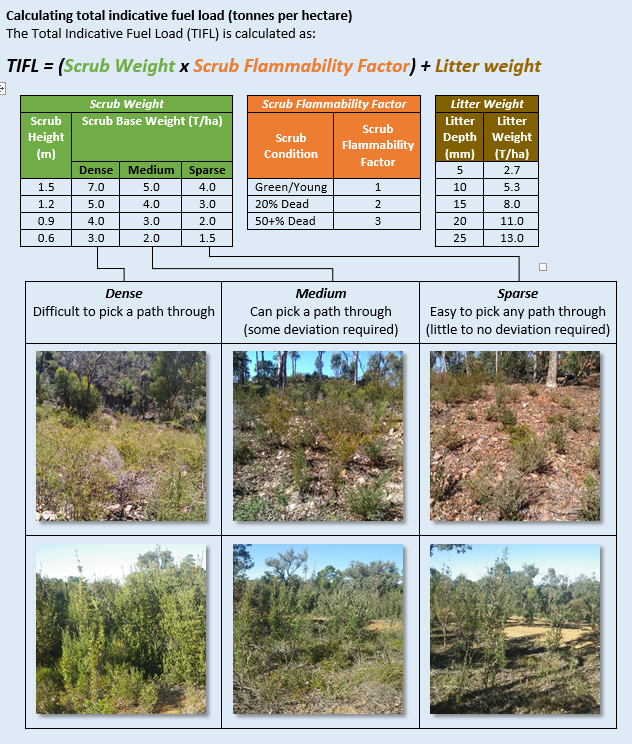Managing fuel loads
It is important that owners and occupiers manage the fuel load on their property to prevent the severity of bushfires. At a minimum this your property is required to comply with the requirements of the Fire-Break Notice which stipulates a maximum fuel load of 2 tonnes per hectare in certain circumstances.
Contrary to popular belief, managing fuel loads do not require (or promote) wholesale clearing of land. It is important to first understand what is meant by the term ‘fuel load’:
Fuel loads are measured as the total dry weigh of all (fine) fuels which are thinner or have a diameter of or less than 6mm. Fuel loadings are commonly stated in tonnes per hectare.
Thus, when managing fuel loads one should focus effort on grasses, leaf twig and bark litter and shrubs – fine fuels easily accessible by fire hence encouraging the fire to spread quickly. Trees are excluded from fuel load calculations, though it is recommended that any low branches (within 2m of the ground) are removed and the base of the tree is kept clear of leaf and bark litter to help keep fire out of the crown.

There are a number of measures available by which fuel loads can be estimated. These range from scientific sampling to visual based inspection.
The Shire of Toodyay recommends the two following methods as they are easy to apply to get an estimate of fuel loads.
- DFES Visual Fuel Load Guides: Basic Method: Using DFES produced guides, which contain many pictures and assessed fuel loads of differing vegetation types and density, match the picture which best represents the vegetation on as viewed on your property to obtain a fuel load estimate. This method is perhaps the quickest and easy method for assessing fuel loads, however not all vegetation types are covered in the guides.
Visual_Fuel_Load_Guide_Swan_Coastal.pdf
Visual Fuel Load Guide Goldfields (Part 1)
Visual Fuel Load Guide Goldfields (Part 2)
- Scrub Fuel Load Inspection Method
Basic Method: Scrub fuel loads are determined by assessing the average height, density and condition (dead vs living) of the vegetation. Simple lookup tables the provide figures which are entered into a simple equation to provide the Total Indicative Fuel Load (TIFL). This method is more universal than the DFES Visual Fuel Load Guide.
There are many methods which can be used to reduce fuel loads. The best method will depend on a number of factors including the type of vegetation, access, ability/tools or skills and environmental considerations such as erosion, the spread of weeds or disease. The table below looks at a number of methods.
| Method |
Pros |
Cons |
| Hand Clearing (includes raking/pruning or pulling) |
Cost effective when undertaken directly.
Relatively low impact.
|
Labour intensive |
| Mechanical Clearing (grading, slashing, mulching) |
Quick |
-May not be suitable on steep slopes – machine disturbance may cause erosion.
-Equipment/contractor costs.
-Introduction of weeds or disease (from uncleaned machinery)
|
| Chemical Spraying |
Cost effective
Low impact
Effective for grass/weed environments
|
Must be conducted at the right time of year to ensure good results.
May need to be conducted multiple time (based on seasonal conditions).
Should not be used around waterways.
|
| Hazard Reduction Burning |
Low impact
Mimics natural processes
|
Equipment/personnel may be required to undertake in a safe manner.
Can only be completed with favourable weather conditions.
|
| Grazing |
Good option for grassland |
Animal welfare considerations |